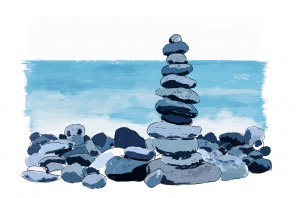.png)
.png)

By Guest Blogger Jane Mobille
PCC, Executive, Career, and Life Coach
Julie Johnson’s May, 2020 blog post BREAKING NEWS: COACHEE WRITES THOUGHTFUL GUIDELINES FOR DIFFICULT CONVERSATIONS! caught my full interest. As I read the post, a question kept entering my mind: “Did Julie and her coachee have another session to address the real elephant in the room?”
As coaches, we ‘dance with the client’, and in this case, the coachee’s goal was to sharpen the skills needed to conduct difficult conversations with underperformers. Yet the coaching session could have gone in a different direction when the coachee revealed that the real reason she finds these conversations challenging is her preference for harmony. In fact, her Guidelines treat the ‘symptom’ (her difficulty in delivering tough feedback), rather than the elephant, or cause: her preference for harmony.
I can imagine their next coaching session. Here are some questions that come to my mind:
At its origin, harmony comes from the Greek harmos, meaning ‘joint’, and the Latin harmonia, ‘a concord of sounds’. By the late 14th century, harmony meant ‘a combination of tones pleasing to the ear’. Julie’s coachee’s definition may be the modern one: ‘compatibility in opinion and action’. As a musician and coach, please allow me to explore the musical metaphor.
Harmony is the use of combinations of notes to form chords. Composers put together progressions of chords that are either unstable (dissonant) or stable (consonant) to create harmonic tension. Harmonic tension is a source of unrest, excitement, and anticipation; it leaves us curious for what will happen next. In traditional harmony, dissonant chords always require resolution into a consonant chord. Could it be the same for the workplace?
Might a harmonious workplace in fact require unrest and excitement to achieve forward movement? Think of tough yet honest feedback as tension, and the positive change that this generates as resolution. Indeed, it is stagnation, rather than movement, that will undermine ‘a compatibility in opinion and action’.
Interestingly, within her Guidelines for Difficult Conversations, Julie’s coachee inadvertently acknowledges the valuable role of dissonance within harmony. Here are three guidelines on harmony which her words suggest.
1. Feedback, whether harsh or kind, is a component of harmony.
“…if I did not provide the feedback, this person may not have a real opportunity to improve and could lose their job later….” “I thought this person would be devastated by this feedback. Instead, he immediately acknowledged the issues I outlined and was relieved to be having the conversation, as it had been a concern for some time.”
2. Harmony must be considered on a group, rather than individual, level.
“Reminding myself that this feedback would improve: (1) the lives of other people on the team; and (2) the performance of the organization — helped me to overcome my feelings of guilt around delivering this feedback.”
3. Harmony requires that all parties take responsibility.
“As for digging deeper, I also felt I could have done more to support this person to perform and that the issue was partly my fault.”
Remember that Julie’s coachee is a young talent, rising quickly within her organization. One way to define leadership is the ability to build and maintain a high performing team. Honest and regular feedback Is arguably the most important tool at a leader’s disposal. In order to continue her rise, Julie’s coachee would do well to neutralize both her want and need for harmony without dissonance. Once she goes to Julie for coaching on this, I hope to read her set of Thoughtful Guidelines on Harmony.
____________________________________________________________________________________________________________________________________
Are you:
Taking on the work of others?
Working too hard to stop and listen?
Not getting enough out of your team?
Watching people line up to ask you for solutions, instead of coming up with the answers themselves?
Would you like to:
Inspire people to be fully engaged and accountable for their work?
Ask questions that catalyse creativity and innovation?
Coach colleagues with confidence using state-of-the-art techniques?
Work closely with like-minded leaders from other organizations?
Take your leadership to the next level by increasing your personal and organizational impact?
Check out our Coaching is an Art Brochure.
Learn more about the October 2022 launch of the next ‘Coaching is an Art’ program.’